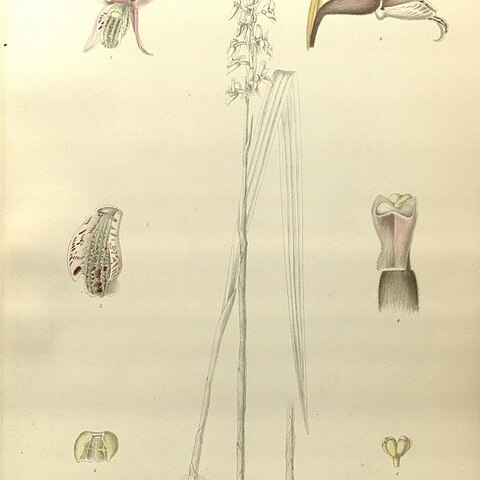Deciduous, terrestrial orchids with slender, subterranean, branching rhizomes and spreading roots. Leaves and inflorescences arising on separate rhizome branches. Leaves usually 1, less commonly 2 (1 much smaller), petiolate, narrow, plicate. Inflorescence terminating rhizome branch, racemose, few-flowered. Peduncle much longer than rachis, thin, wiry, with numerous stem-encircling, sheathing bracts. Flowers pedicellate, not opening widely. Tepals of similar size, externally hairy. Dorsal sepal free. Lateral sepals gibbous at the base where they are fused to the column. Petals narrower than sepals. Labellum attached to anterior base of column. Labellum lamina 3-lobed, with shallow basal pouch; lateral lobes large; midlobe expanded distally. Callus with prominent ridges. Column slender, hairy, without basal foot or vestigial foot.

